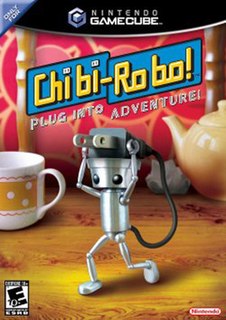 W
WChibi-Robo! is a platform-adventure video game for the GameCube developed by Skip Ltd. and published by Nintendo. The game was released in Japan in 2005, and in North America and Europe the following year. Originally conceived as a point-and-click adventure game, it was put on developmental hold until Nintendo producer Shigeru Miyamoto gained interest in the title and overhauled its production.
 W
WEternal Darkness: Sanity's Requiem is a psychological horror action-adventure video game developed by Silicon Knights and published by Nintendo. Originally planned for the Nintendo 64, it was switched to the GameCube for development and released on June 24, 2002. It is the first M-rated game published by Nintendo as well as their first game released after Satoru Iwata became President of Nintendo. While the game features similar gameplay mechanics to that of Resident Evil, it distinguishes itself with unique features, such as "sanity effects". In the game, players take on the role of several characters as they battle a powerful entity who seeks to enslave humanity.
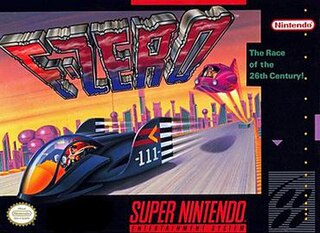 W
WF-Zero is a futuristic racing video game developed by Nintendo EAD and published by Nintendo for the Super Nintendo Entertainment System (SNES). The game was released in Japan on November 21, 1990, in North America in August 1991, and in Europe in 1992. F-Zero is the first game of the F-Zero series, and was a launch title for the SNES. It was emulated for the Virtual Console service on various Nintendo platforms over the years and as part of the Super NES Classic Edition in 2017.
 W
WF-Zero GX is a 2003 racing video game developed by Amusement Vision and published by Nintendo for the GameCube console. It runs on an enhanced version of the engine used in Super Monkey Ball. F-Zero AX, the arcade counterpart of GX, uses the Triforce arcade system board conceived from a business alliance between Nintendo, Namco and Sega. Published by Sega, it was released alongside GX in 2003.
 W
WF-Zero X is a futuristic racing video game for the Nintendo 64 (N64) console. Developed by Nintendo's EAD division, it was released in Japan, North America, and Europe in 1998. In 2000, an expansion pack was released in Japan providing numerous extra features not in the original game. F-Zero X was ported in 2004 to the iQue Player in China. The game was re-released on the Wii Virtual Console in Japan, Europe and in North America, in 2007. To honor the 100th Virtual Console release in Europe, it became available on June 15.
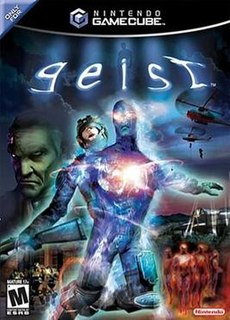 W
WGeist is a first-person shooter action-adventure video game for the Nintendo GameCube, released on August 15, 2005, in North America; on October 7, 2005, in Europe; and on November 3, 2005, in Australia.
 W
WGiftpia , stylized as GiFTPiA, is a video game, developed by Skip Ltd. for the GameCube. It was released in Japan on April 25, 2003. Nintendo cancelled the North American localization of Giftpia. In English, the game would most likely be better understood as called "Giftopia" to represent the two words, gift and utopia.
 W
WThe Legend of Zelda is a 1986 action-adventure video game developed and published by Nintendo and designed by Shigeru Miyamoto and Takashi Tezuka. Set in the fantasy land of Hyrule, the plot centers on an elf-like boy named Link, who aims to collect the eight fragments of the Triforce of Wisdom in order to rescue Princess Zelda from the antagonist, Ganon. During the course of the game, the player controls Link from a top-down perspective and navigates throughout the overworld and dungeons, collecting weapons, defeating enemies and uncovering secrets along the way.
 W
WThe Legend of Zelda is a high fantasy action-adventure video game franchise created by Japanese game designers Shigeru Miyamoto and Takashi Tezuka. It is primarily developed and published by Nintendo, although some portable installments and re-releases have been outsourced to Capcom, Vanpool, and Grezzo. The gameplay incorporates action-adventure and elements of action RPG games.
 W
WThe Legend of Zelda: A Link to the Past is an action-adventure game developed and published by Nintendo for the Super Nintendo Entertainment System. It is the third game in The Legend of Zelda series and was released in 1991 in Japan and 1992 in North America and Europe.
 W
WThe Legend of Zelda: Ocarina of Time is an action-adventure game developed and published by Nintendo for the Nintendo 64. It was released in Japan and North America in November 1998, and in PAL regions the following month. Ocarina of Time is the fifth game in The Legend of Zelda series, and the first with 3D graphics.
 W
WMario is a Japanese media franchise, published and produced by video game company Nintendo, created by game designer Shigeru Miyamoto and starring the fictional character Mario. It is primarily a video game franchise, but has extended to other forms of media, including several television series and a 1993 feature film. The series' first instalment was 1983's Mario Bros., although Mario had made his first appearance in 1981's Donkey Kong and had already been featured in several games of the Donkey Kong and Game & Watch series. The Mario games have been developed by a variety of developers including Nintendo, Hudson Soft, and AlphaDream. Most Mario games have been released exclusively for Nintendo's various video game consoles and handhelds, from the third generation onward.
 W
WMario Bros. is a platform game developed and published for arcades by Nintendo in 1983. It was designed by Shigeru Miyamoto and his coworker and Nintendo’s chief engineer Gunpei Yokoi. Italian-American plumber Mario and his brother Luigi exterminate creatures emerging from the sewers by flipping them on their backs and kicking them away. The original versions of Mario Bros.—the arcade version and the Family Computer/Nintendo Entertainment System (FC/NES) version—were received positively by critics.
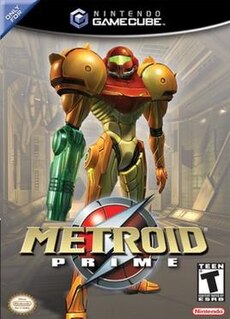 W
WMetroid Prime is an action-adventure game developed by Retro Studios and Nintendo for the GameCube. Metroid Prime is the fifth main installment in the Metroid series, and the first Metroid game to use 3D computer graphics being played from the first-person perspective. Because exploration takes precedence over combat, Nintendo classifies the game as a first-person adventure rather than a first-person shooter. It was released in North America in November 2002, and in Japan and Europe the following year. On the same day as its North American release, Nintendo also released the Game Boy Advance game Metroid Fusion, marking the return of the Metroid series after an eight-year hiatus following Super Metroid (1994).
 W
WMother, officially known outside of Japan as EarthBound Beginnings, is a role-playing video game developed by Ape and published by Nintendo for the Famicom. The first entry in the Mother series, it was first released in Japan on July 27, 1989. It is modeled on the gameplay of the Dragon Quest series, but is set in the late 20th-century United States, unlike its fantasy genre contemporaries. Mother follows the young Ninten as he uses his great-grandfather's studies on psychic powers to fight hostile, formerly inanimate objects and other enemies. The game uses random encounters to enter a menu-based, first-person perspective battle system.
 W
WPilotwings is a video game developed and published by Nintendo for the Super Nintendo Entertainment System. The game was originally released in Japan in December 1990, shortly after the launch of the Super Famicom in the country. It was also released as a launch title for the SNES in August 1991 in North America, with a European release following in 1992.
 W
WPokémon Crystal Version is a 2000 role-playing video game developed by Game Freak and published by Nintendo for the Game Boy Color. It is an enhanced version of Pokémon Gold and Silver, and is part of the second generation of the Pokémon video game series. It was released in Japan on December 14, 2000, North America on July 29, 2001 and Europe on November 2, 2001.
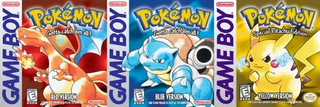 W
WPokémon Red Version and Pokémon Blue Version are 1996 role-playing video games developed by Game Freak and published by Nintendo for the Game Boy. They are the first installments of the Pokémon video game series. They were first released in Japan in 1996 as Pocket Monsters: Red and Pocket Monsters: Green, with the special edition Pocket Monsters: Blue being released in Japan later that same year. The games were later released as Pokémon Red and Pokémon Blue in North America and Australia in 1998 and Europe in 1999.
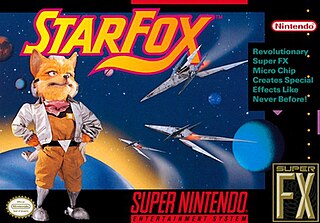 W
WStar Fox, released as Starwing in PAL territories, is a 1993 rail shooter video game co-developed by Nintendo EAD and Argonaut Software and published by Nintendo for the Super Nintendo Entertainment System (SNES). The first game in the Star Fox series, Star Fox follows Fox McCloud and the rest of the Star Fox team defending their homeworld of Corneria against the attacking forces of Andross. It ultimately sold over 4 million copies.
 W
WStar Fox 2 is a multidirectional shooter developed by Nintendo and Argonaut Software for the Super Nintendo Entertainment System (SNES). It is the sequel to Star Fox (1993) and, like its predecessor, pushed the graphical capabilities of the SNES with Argonaut's Super FX technology. Star Fox 2 continues the battle against Emperor Andross, who seeks to conquer the Lylat system. It introduces semi-real-time gameplay, new ship types, new Star Fox team members, and a more advanced 3D game engine. It is the seventh game in the series but the second made.
 W
WStar Fox 64, known in the PAL region as Lylat Wars, is a 3D scrolling shooter game themed around aircraft combat for the Nintendo 64 video game console. It is a reboot of the original Star Fox. An autostereoscopic remake, titled Star Fox 64 3D, was released for the Nintendo 3DS in 2011.
 W
WStar Fox Guard is a tower defense video game co-developed by Nintendo and PlatinumGames for the Wii U. The game was bundled as a separate disc for the first print edition of Star Fox Zero during its release in April 2016, and as a digital download code on the Wii U eShop afterwards.
 W
WStar Fox Zero is a 3D scrolling shooter video game developed by Nintendo and PlatinumGames for the Wii U. It is the sixth installment in the Star Fox series, and the second reboot in the series following Star Fox 64. After a delay from November 2015, the game was released in April 2016 and received mixed to positive reception. A standalone tower defense game, titled Star Fox Guard, was bundled with the game.
 W
WStunt Race FX, known in Japan as Wild Trax , is a cartoon-style, 3D-racing video game developed by Nintendo EAD with the assistance of Argonaut Software and published by Nintendo for the Super NES. It was the second game to use the 3D-centric Super FX powered GSU-1.
 W
WSuper Mario is a platform game series and media franchise created by Nintendo and featuring their mascot, Mario. Alternatively called the Super Mario Bros. series or simply the Mario series, it is the central series of the greater Mario franchise. At least one Super Mario game has been released for every major Nintendo video game console. There have also been a number of Super Mario video games released on non-Nintendo gaming platforms. How many Super Mario games there are has been debated. There are currently twenty-one similar games and one cross-series game that may or may not be included as part of the series.
 W
WSuper Mario 64 DS is a 2004 platform game developed and published by Nintendo for the Nintendo DS. It was a launch game for the DS and the system's first Mario game. Super Mario 64 DS is a remake of the 1996 Nintendo 64 game Super Mario 64, with new graphics, characters, collectibles, a multiplayer mode, and several extra minigames. As with the original, the plot centers on rescuing Princess Peach from Bowser. Unlike the original, Yoshi is the original protagonist, with Mario, Luigi, and Wario as unlockable characters. It also acts as somewhat of a sequel.
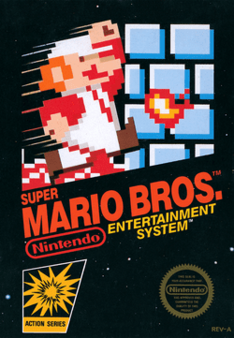 W
WSuper Mario Bros. is a platform video game developed and published by Nintendo. The successor to the 1983 arcade game, Mario Bros., and the first in the Super Mario series of platformers, it was released in Japan in 1985 for the Famicom, and in North America and Europe for the Nintendo Entertainment System (NES) in 1985 and 1987 respectively. Players control Mario, or his brother Luigi in the multiplayer mode, as they travel the Mushroom Kingdom to rescue Princess Toadstool from Bowser. They must traverse side-scrolling stages while avoiding hazards such as enemies and pits with the aid of power-ups such as the Super Mushroom, Fire Flower, and Starman.
 W
WSuper Mario Bros. 2 is a platform video game developed and published by Nintendo for the Nintendo Entertainment System. The game was first released in North America in October 1988, and in the PAL region the following year. It has been remade or re-released for several video game consoles.
 W
WSuper Mario Bros. 3 is a platform game developed and published by Nintendo for the Nintendo Entertainment System (NES). It was released for home consoles in Japan on October 23, 1988, in North America on February 12, 1990 and in Europe on August 29, 1991. Prior to its release on the NES, it was initially released in North America on July 15, 1989 via PlayChoice-10 arcade machines. It was developed by Nintendo Entertainment Analysis and Development, led by Shigeru Miyamoto and Takashi Tezuka.
 W
WSuper Mario Bros. is a platform video game developed and published by Nintendo. The successor to the 1983 arcade game, Mario Bros., and the first in the Super Mario series of platformers, it was released in Japan in 1985 for the Famicom, and in North America and Europe for the Nintendo Entertainment System (NES) in 1985 and 1987 respectively. Players control Mario, or his brother Luigi in the multiplayer mode, as they travel the Mushroom Kingdom to rescue Princess Toadstool from Bowser. They must traverse side-scrolling stages while avoiding hazards such as enemies and pits with the aid of power-ups such as the Super Mushroom, Fire Flower, and Starman.
 W
WSuper Mario Galaxy is a 2007 platform action-adventure video game developed and published by Nintendo for the Wii, and the third 3D game in the Super Mario series. As Mario or Luigi, the player embarks on a quest to rescue Princess Peach, save the universe from Bowser, and collect 121 Power Stars. The levels in the game consist of galaxies filled with minor planets and worlds, with different variations of gravity, the central element of gameplay. The player character is controlled using the Wii Remote and Nunchuk, and completes missions, fights bosses, and reaches certain areas to collect Power Stars. Certain levels use the motion-based Wii Remote functions.
 W
WSuper Mario Galaxy 2 is a 2010 platform video game developed and published by Nintendo for the Wii. It was first announced at E3 2009 and is the sequel to the original 2007 game. It was released worldwide in 2010. The story follows Mario as he pursues the Koopa King, Bowser, into outer space, where he has imprisoned Princess Peach and taken control of the universe using Power Stars and Grand Stars. Mario must travel across various galaxies to recover the Power Stars in order to travel to the center of the universe and rescue Princess Peach.
 W
WSuper Mario Run is a 2016 platform video game developed and published by Nintendo for iOS and later Android. It is Nintendo's first mobile game that is part of one of the company's long-running and major franchises.
 W
WSuper Mario World is a 1990 platform game developed by Nintendo for the Super Nintendo Entertainment System (SNES). The story follows Mario's quest to save Princess Peach and Dinosaur Land from the series' antagonist Bowser and his minions, the Koopalings. The gameplay is similar to that of earlier Super Mario games: players control Mario or his brother Luigi through a series of levels in which the goal is to reach the goalpost at the end. Super Mario World introduced Yoshi, a dinosaur who can eat enemies, as well as gain abilities by eating the shells of Koopa Troopas.
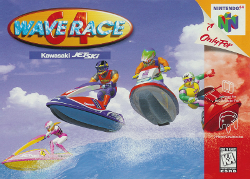 W
WWave Race 64 is a racing video game developed by Nintendo EAD and published by Nintendo. It was released for the Nintendo 64 in 1996 and is a follow-up to the 1992 Game Boy title Wave Race. Most of the game involves the player racing on a Jet Ski on a variety of courses while successfully manoeuvring the vehicle around various buoys. A multiplayer mode where two players can compete against each other on a chosen course is also included. The game supports the Controller Pak, which allows players to transfer saved data from one game cartridge to another.
 W
WWii Music is a music video game developed and published by Nintendo for the Wii video game console. The game was released in Japan and North America in October 2008, and in Europe and Australia in the following month. Wii Music is part of both Nintendo's Touch! Generations brand and the Wii series.
 W
WSuper Mario World 2: Yoshi's Island is a 1995 platform game developed and published by Nintendo for the Super Nintendo Entertainment System (SNES). To reunite baby Mario with his brother Luigi, who has been kidnapped by Kamek, the player controls Yoshi, a friendly dinosaur, through 48 levels while carrying Baby Mario. As a Super Mario series platformer, Yoshi runs and jumps to reach the end of the level while solving puzzles and collecting items. In a style new to the series, the game has a hand-drawn aesthetic and is the first to have Yoshi as its main character. The game introduces his signature abilities to flutter jump and produce eggs from swallowed enemies.
 W
WZelda II: The Adventure of Link is an action role-playing video game with platforming elements. This second installment in The Legend of Zelda series was developed and published by Nintendo for the Family Computer Disk System on January 14, 1987. This is less than one year after the Japanese release, and seven months before the North American release, of the original The Legend of Zelda. Zelda II was released in North America and the PAL region for the Nintendo Entertainment System in late 1988, almost two years after its initial release in Japan.